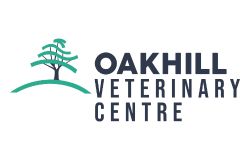CASE STUDY: EQUINE CORNEAL ULCERATION
We are often asked ‘what is considered a veterinary emergency?’ Most people will automatically think colic, difficulties in breathing, severe lameness, bleeding, a wound located near a joint or in pregnant mares, dystocia (difficulties giving birth).
Problems with a horse’s eye often don’t feature, with a lot of owners opting to try an over-the counter product in the first instance prior to involving their vet. Whilst, for very minor ocular disease cases, this may be sufficient, if your horse has a more serious complaint such as corneal ulceration, incorrect treatment will not only delay healing but in severe cases, may be detrimental and result in the loss of an affected eye. Therefore, we advise that you contact your vet immediately should you notice any ocular abnormalities in your horse.
Meet Emily
Emily, a talented and much-loved showjumping pony, is owned by one of our wonderful receptionists Chloe and her family.
On arrival at the yard one fateful evening in October last year, Emily was noted as having a partially shut and very painful right eye. Chloe immediately called the practice and Leona attended to examine Emily and formulate a treatment plan.
Initial diagnosis
On examination, Emily was found to have a deep ulcer, with the worse affected areas extending to Descemet’s membrane. The meant that in places, only one layer of cornea remained intact, and should this become defective, Emily would have a ruptured eye.
We were incredibly concerned this may happen and therefore formulated an intensive treatment plan…
Treatment plan
This plan consisted of:- Pain relief
- A combination of different topical medications (including antibiotics to protect against secondary bacterial infection)
- Plasma/EDTA (a product made from Emily’s own blood) to try to prevent the ulcer from progressing to a ‘melting’ ulcer
- A corneal repair gel
A month and a half later
Chloe diligently administered these medications every few hours and the ulcer rapidly stabilised, but took a month and a half to fully heal.
Emily has a small residual scar at the site of the previous ulcer but is back out and about with Mia – Chloe and Lee’s youngest daughter – doing what they do best – going very fast around SJ courses!
